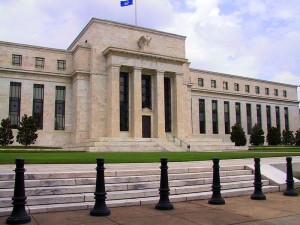The dome of the U.S. Capitol and the portico of the White House may be more iconic, but almost every evening the Federal Reserve Building is featured on the evening news, making it one of the most familiar architectural images on television. It was designed by Paul Philippe Cret (1876-1945), an unsung giant among American architects. Born in Lyon, an ancien élève of the École des Beaux-Arts, he made his career in the U.S., but he stands apart from his contemporaries. Unlike John Russell Pope, for example, he was not a far-ranging eclectic, nor did he romanticize the past. Cret was interested in developing what he called a “new classicism,” and he did so in a series of great public buildings—he designed few private houses—such as the Folger Shakespeare Library, several World War I memorials, memorable bridges, and the University of Texas at Austin. He stripped away ornament almost to the same extent as the European modernists, but was unwilling to abandon the classical lessons of the past as far as planning and composition went. The result, as the Fed amply demonstrates, is not quite timeless architecture, but almost. His new classicism stands up particularly well when compared to the cheerless 1950s International Style Washington office buildings that succeeded it.

